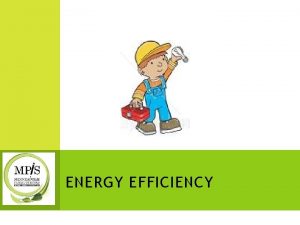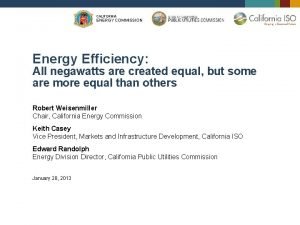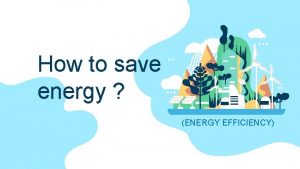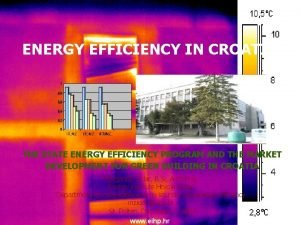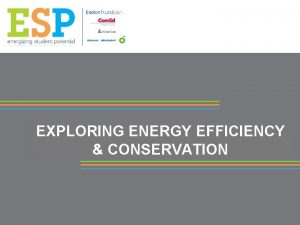Energy Efficiency in California Why We Should All









- Slides: 9

Energy Efficiency in California— Why We Should All Be Proud of What We Do Otherwise what we in the energy business call the “Rosenfield slides” October 2011

Art Rosenfield • • • Arthur H. Rosenfeld received his Ph. D. in Physics in 1954 at the Univ. of Chicago as the last graduate student under Enrico Fermi, and then joined the Department of Physics at UC Berkeley. There he joined, and eventually oversaw, the particle physics group of Luis Alvarez at Lawrence Berkeley National Laboratory until 1974. He changed his focus to the efficient use of energy, formed the Center for Building Science, and led it until 1994. From 1994 to 1999 he was Senior Advisor to the U. S. DOE’s Asst. Secretary for Energy Efficiency and Renewable Energy. In 2000 Governor Davis appointed him as a CEC Commissioner, & Governor Schwarzenegger reappointed him in 2005. There, he was responsible for the CEC’s research program; for energy efficiency, including the EE standards for buildings and for appliances; and collaborated with the PUC to oversee California's Energy Efficiency Program. He retired from the CEC in 2010. He is the author or co-author of nearly 400 publications and received many awards. He is most proud to have received in 2006 the Enrico Fermi Award, the oldest and one of the most prestigious science and technology awards given by the U. S. Government. He developed and used a variety of graphs to show the importance of energy efficiency and California’s importance in this area.

Strategies for Meeting California’s CO 2 Goals in 2020 Total Reductions = 174 Million metric Tons CO 2 equivalent Other Strategies , 4% Energy Efficiency, 17% Forestry, 20% Renewable Energy, 10% Water Efficiency, 1% Cleaner Power Plants, 9% Smart Growth, 15% Renewable Fuels, 2% 3 Clean Cars, 28%

California is More Energy Efficient

Where Savings Have Come From

In the United States = 80 power plants of 500 MW each 6

The Importance of Standards and Programs

Impact of Standards on Efficiency of 3 Appliances 110 90 Effective Dates of National Standards Effective Dates of State Standards 80 Gas Furnaces = 100 Index (1972 = 100) = 75% 70 60% 60 Central A/C 50 SEER = 13 40 Refrigerators 30 20 1972 25% 1974 1976 1978 1980 1982 1984 1986 1988 1990 1992 1994 1996 1998 2000 2002 2004 2006 Year Source: S. Nadel, American Council for Energy Efficiency Engineering, in ECEEE 2003 Summer Study, www. eceee. org 8

Source: David Goldstein, National Resources Defense Council
 Pictures
Pictures Renewable energy and energy efficiency partnership
Renewable energy and energy efficiency partnership Allocative efficiency vs productive efficiency
Allocative efficiency vs productive efficiency Allocative efficiency vs productive efficiency
Allocative efficiency vs productive efficiency Productively efficient vs allocatively efficient
Productively efficient vs allocatively efficient Why all businesses should embrace sustainability
Why all businesses should embrace sustainability Name 3 points
Name 3 points Don't ask why why why
Don't ask why why why Transformer efficiency formula
Transformer efficiency formula All day efficiency
All day efficiency










